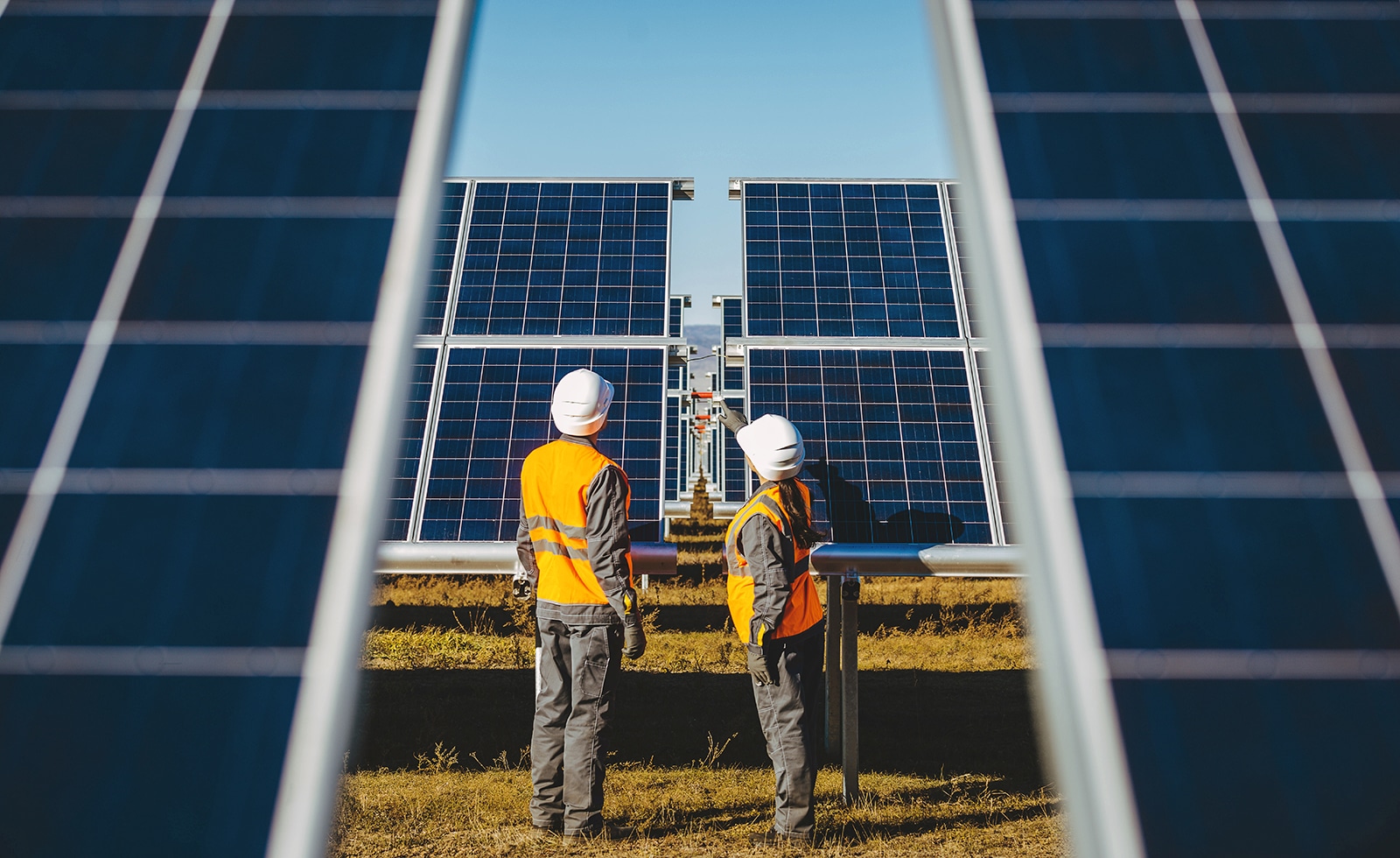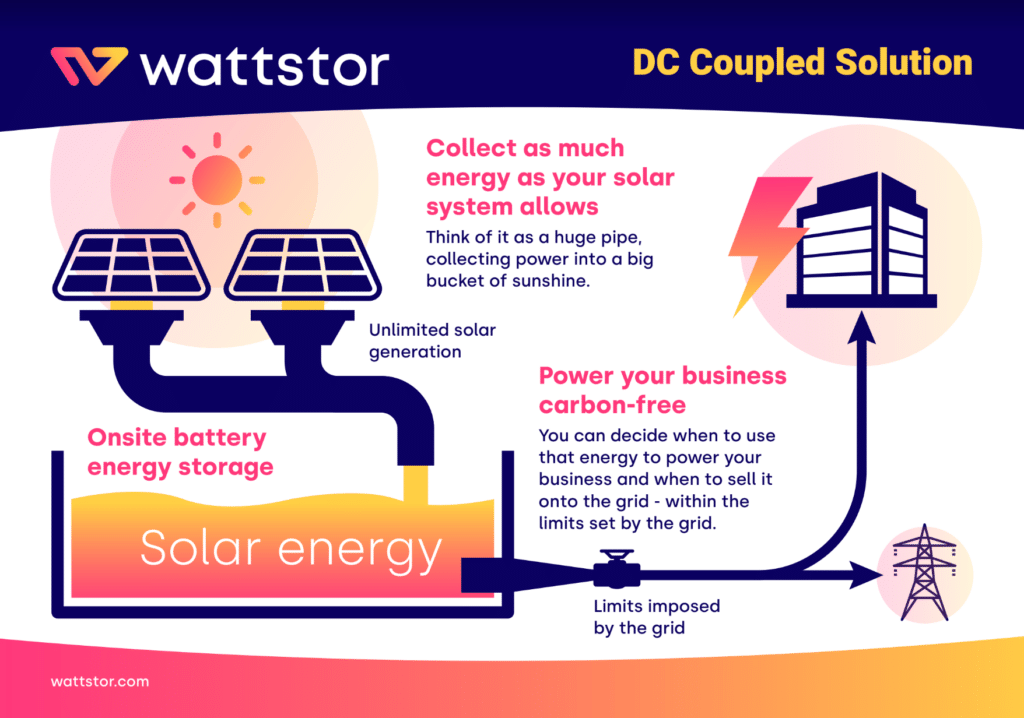Grid dependence remains a significant challenge for many commercial and industrial sites. These constraints act as a barrier to achieving true energy autonomy for any organisation with significant solar power setups.
Despite having substantial solar installations, these sites often remain tethered to the grid due to constraints in energy storage, grid capacity and regulatory limitations, limiting their potential for greater onsite energy generation and at the mercy of rising standing charges from their energy supplier.
This grid dependence means that during periods of low solar generation or high energy demand, sites still need to draw power from the grid, often at higher costs.
Grid constraints can limit the amount of solar energy that can be generated on site or exported back to the grid, reducing potential revenue from surplus energy generation. This reliance underscores the importance of optimising both the capacity and efficiency of solar power systems to minimise reliance on the grid and enhance energy independence.
In our experience as a leading energy storage solutions provider here at Wattstor, these are the most common grid constraints that we see sites and developers suffering with most:
- Capacity limits
The maximum amount of electricity the grid can handle at any given time. - Voltage regulation
Ensures the power delivered is consistent and stable. - Frequency stability
Maintains the balance between electricity supply and demand.
What are Grid Constraints & Why Do They Cause Businesses Problems?
Assessing your existing site capacity
Evaluate site-specific factors
Evaluating your site’s capability to support onsite generation is a crucial step in reducing your grid dependence and determining how much additional solar power you can harness, without upgrading the size of your incoming supply.
We recommend assessing several site-specific factors, including:
- Rooftop and ground space
The available area on rooftops and ground surfaces where solar panels can be installed. More space allows for a larger array of solar panels, which can generate more electricity. - Structural integrity
The strength and stability of the buildings and structures that will support the solar panels. This involves assessing whether the roofs can bear the weight of the panels and withstand environmental factors such as wind and snow loads. - Grid connection
The existing connection between the site and the electrical grid. This includes the capacity of the current grid connection to handle additional power generated by the solar panels and the potential need for upgrades to accommodate increased energy flow.
By evaluating these aspects, site managers and business owners can determine how much additional solar capacity they can install and whether any structural or grid-related upgrades are necessary to support expanded solar power systems.
Speak to a Wattstor energy specialist today »
Using DC-coupled systems to supercharge ROI
DC-coupled systems represent a significant advancement in solar technology. They allow direct current (DC) electricity generated by solar panels to be stored in batteries before being converted to alternating current (AC) for use.
Here are the key benefits of DC-coupled systems:
- Enhanced energy flow
In DC-coupled systems, the direct energy flow from solar panels to batteries minimises energy losses that typically occur during multiple energy conversions. By reducing the number of conversions (DC to AC and back to DC), these systems maintain a higher overall efficiency, ensuring that more of the generated solar power is utilised effectively. - Benefit from more onsite generation
With a DC-coupled system, the solar and battery share an AC inverter: the size of the solar generation on the DC side is only limited by the size of the battery capacity. In an AC-coupled system, both the solar and battery retain their own inverters meaning that the onsite generation is limited to the combined kW of the solar and battery inverters at the limit set by the DNO. - Better efficiency: AC-coupled systems require converting DC electricity from solar panels to AC for site use and then back to DC for battery storage, resulting in significant energy losses at each stage. DC-coupled systems, by contrast, store and manage energy in its original DC form until it is needed, thus reducing conversion losses and improving the overall efficiency of the solar power system.
- Lower costs long term
By directly storing solar energy in batteries, DC-coupled systems reduce the dependency on grid electricity, especially during peak demand times when electricity prices are highest. This reduction in grid reliance leads to substantial cost savings on energy bills. The improved efficiency of DC-coupled systems means less energy is wasted, resulting in lower operational costs and better returns on investment over time.

Watch our DC-coupled explainer webinar »
How to optimise your site solar power usage
Effective load management and energy storage
To optimise solar power usage at your site, implementing effective load shifting strategies is crucial. These strategies involve:
- Smart Energy Management Systems (EMS)
Advanced EMS like Wattstor’s Podium solution, monitors and controls energy usage in real-time. These systems can predict demand and adjust energy flows. This ensures that you use solar power efficiently and store or sell excess energy back to the grid when advantageous. - Data Analytics
Employing data analytics to analyse energy consumption patterns, allowing for the adjustment of load schedules to match solar power generation peaks. This helps in reducing reliance on the grid during peak hours and maximising solar energy usage.
Advanced energy storage solutions
Energy storage plays a pivotal role in optimising solar power usage by storing excess energy generated during peak sunlight hours for use during periods of low solar generation. Key components include:
- Battery Energy Storage Systems (BESS)
These systems store surplus solar energy, which can then be used to power the site during cloudy periods or at night. This reduces grid dependency and enhances energy security. - Integration with grid management systems
Ensuring that your energy storage systems are integrated with grid management systems allows for efficient synchronisation with the grid. This integration helps in balancing the load, providing stability, and participating in electricity market opportunities, such as peak shaving and demand response programs.
Importance of regular system maintenance
Regular system maintenance is crucial for maintaining peak performance. Scheduled inspections and upkeep help identify and resolve potential issues before they escalate, ensuring your solar power system operates efficiently.
Understand the financial help you can receive
Wattstor’s fully funded renewable energy systems allow site developers and businesses to:
- access renewable energy sources
- access storage
- access electricity markets
All without any upfront capital expenditure thus reducing grid dependence.
Fully funded energy systems
Wattstor assists in the design, funding, operation and optimisation of onsite commercial and industrial renewable energy systems tailored to the site’s specific needs and consumption patterns. This includes solar panels, battery storage, energy management systems and other necessary components.
Through a Power Purchase Agreement (PPA) typically lasting 15-25 years, Wattstor provides the site with renewable electricity at a lower cost than grid electricity prices. The site gradually gains ownership of the assets as costs reduce over the PPA term.
During the PPA, Wattstor maintains all assets, warranties, and handles energy automation through their AI-powered energy management system Podium. This removes the operations and maintenance burden from the site owner.
Significantly reducing grid dependence
By eliminating upfront capex and transferring risks associated with owning and managing energy systems, Wattstor’s fully funded energy model enables sites to benefit from renewable energy, storage and electricity market participation without significant financial exposure. This supports site developers in reducing their capital expenditure while achieving cost savings, sustainability goals and ultimately energy resilience.
Fully funded energy systems »
Speak to an energy storage expert today
Author

Jochen Schneider
Managing Director, Germany
With over 25 years of experience in digital energy services, smart energy, and business model innovation, Jochen brings a unique drive and passion to Wattstor. His focus on delivering intelligent energy solutions that balance cost efficiency and sustainability continues at Wattstor. As Managing Director of Wattstor GmbH, Jochen brings the commercial benefits of Price Protect to the German market, working alongside Wattstor’s experienced European team while leading his own.

